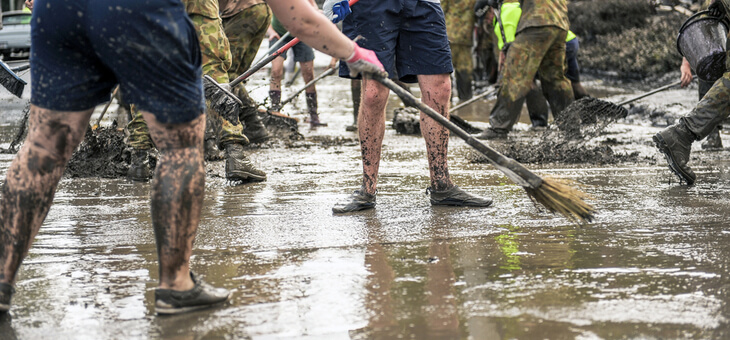Whether it’s your car or home, recent events have shown that, sadly, being flooded in Australia is a regular occurrence.
It pays to be insured, but the risk of damage will be reflected in any policy. As such, the higher the risk of flooding, the higher the premium.
Many insurers include flooding in their standard policies, some will include an opt-out policy, some will include a defined amount of damages and some will not cover floods in any circumstances.
According to leading insurance body the Insurance Council of Australia (ICA), a flood is defined as water that has escaped or been released from a lake, river, creek or other natural watercourse or any reservoir, canal or dam.
Read: Is your home prepared for a natural disaster?
However, if you don’t have flood insurance, your policy may still cover you for storm or rainwater damage or if your house has become inundated by rainwater runoff. All options should be explained in the product disclosure statement (PDS) for the policy.
ICA says most properties in Australia have little to no flood risk. According to the group’s figures, about 2.8 per cent of properties have a moderate to extreme risk of flooding and about 7 per cent have some exposure.
About 80 per cent of insurance losses from floods occur in areas that have been flooded in the past.
A favourite image of any news story during a flood is a hapless driver who has gambled on driving through a flooded river and lost.
But with devastating floods and record rainfall across much of eastern Australia, your car could be sitting in a driveway and be water damaged.
Read: Aussies driving less could be paying too much for car insurance
To make a claim on a car for water or flood damage, there are a few things to consider and the first is to read the policy’s PDS.
Flood water damage will only be covered under comprehensive car insurance. Third party car insurance generally covers only fire and theft.
Car insurance policies will not cover ‘reckless acts’ and that includes driving a car into water.
It’s a good rule to never drive into running water if you can avoid it as, according to Victoria State Emergency Services, it only takes water 15cm deep with a flow speed of about 3.6km/hour to float a small car.
Some policies will require you to move your car to safer ground, but carefully consider if this is at all possible, taking into account current and predicted weather. If you can’t move your car, take a photo of the rising water so as to support a claim.
Policies will have varying degrees of coverage for any items in the car, so check to see what’s covered before making a claim.
To claim on any damaged items in your car, make a note of each item with a detailed description including brand, model and serial number, if possible, and store the item somewhere safe.
And don’t worry if you can’t find your papers, insurers have electronic records of all policies.
In some welcome news, the federal government has authorised a disaster recovery payment for the floods. The disbursement is a one-off, non means-tested payment of $1000 per adult and $400 per child.
Read: Are you eligible for the disaster recovery payment?
Australia’s top representative insurance body, the Insurance Council of Australia (ICA), has also declared south-east Queensland and parts of northern New South Wales a ‘catastrophe’.
This declaration escalates the industry’s response to the crisis and makes it easier for policy holders to make a claim by speeding up processing.
The ICA said claims will be triaged to direct assistance to the worst-affected areas and a taskforce has been established to identify and address issues from the rains and flooding.
ICA said you can start cleaning your car, but you should take pictures or video of the damage first.
Once you have had any damage assessed, it’s important to get started as soon as possible as mould, mildew and corrosion start as soon as the vehicle is exposed to water.
Always wear protective gear when cleaning any sort of flood damage as flood water is quite often carrying sewage and other hazardous waste.
If you enjoy our content, don’t keep it to yourself. Share our free eNews with your friends and encourage them to sign up.

